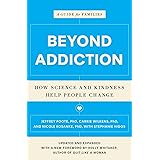This article builds upon the valuable **everyday English conversation** presented in the video above. Effective communication is essential. Key conversational elements are demonstrated clearly. These elements are explored in more detail below. Understanding these aspects will aid in developing your **English speaking skills**. Various situations are covered within the dialogue. These situations include introductions, expressing gratitude, and discussing job opportunities.
Mastering English Introductions and Welcomes
Formal introductions are often encountered. The video illustrates a common scenario. Sarah is welcomed by Mark into her new home. This interaction highlights polite greeting phrases. Essential social etiquette is also demonstrated. Understanding these initial exchanges is crucial. It helps in establishing positive relationships. Such interactions are a fundamental part of **learning English**.
When meeting new people, certain phrases are consistently used. “Nice to meet you” is a standard expression. “Welcome to our home” is another polite greeting. These phrases are universally understood. They help to make others feel comfortable. Fluent use of these expressions can enhance your **English communication**.
Expressing Gratitude and Politeness in English
Showing appreciation is a vital social skill. Many instances of gratitude are observed in the video. Sarah thanks Mark for his kindness. Mark offers Sarah assistance with her luggage. These actions are met with appreciative responses. Politeness is foundational to many interactions.
Phrases such as “Thank you so much” are often heard. “You’re welcome” is the standard reply. These simple exchanges foster good relations. They demonstrate respect for others. Consistent practice of these phrases will improve your natural flow in **English conversations**.
Navigating Everyday Conversations
Common inquiries about personal details are often made. Questions about age, origin, and profession arise naturally. Sarah states, “I’m 23 years old and I’m from Oxford.” Mark similarly shares his background. Such information is typically exchanged early on. It helps people to learn about one another.
Discussions about personal interests are also frequent. Linda’s passion for shopping is mentioned. Mark notes, “Linda is a big fan of shopping.” This offers insight into her personality. It also provides a topic for further dialogue. These conversational threads are important for natural interaction.
Talking About Hobbies and Interests
Sharing personal hobbies connects people. The video highlights shopping as a common pastime. Linda’s enthusiasm for buying items is evident. This topic can spark lively discussions. It allows individuals to reveal their passions.
Phrases such as “big fan of” are helpful. They clearly convey one’s strong interest. Asking “How about you?” invites the other person to share. These elements are critical for engaging dialogue. Such skills are central to effective **everyday English conversation**.
Exploring Job Search and Employment English
Job hunting conversations are often complex. Linda’s job search process is depicted. She inquires about a saleswoman position. Her interaction with Rachel, the sales manager, is detailed. This provides a glimpse into professional dialogue. Key vocabulary related to employment is introduced.
Specific job requirements are discussed. Rachel states, “We only hire fulltime salewoman.” Working hours are specified: “9 am to 2 pm or 2 pm to 8 pm.” These details are crucial for applicants. Understanding these terms is beneficial for **ESL learners** considering work.
Understanding Job Role Details and Benefits
Further specifics about the saleswoman role are provided. “You will have a day off per week.” This clarifies the work-life balance. A “free meal and also a revenue bonus” are offered. These benefits are attractive to potential employees. Salary discussions are often reserved for later stages.
Linda’s quick decision to accept the job is shown. She states, “Yes, I agree.” This highlights proactive engagement. These phrases are highly practical. They are useful for anyone applying for jobs. Practicing these scenarios improves **English speaking fluency**.
Sharing Good News and Celebrating
Announcing positive developments is a joyful occasion. Linda reveals her new job as a saleswoman. Her family reacts with congratulations. This demonstrates how good news is shared and received. Such moments build communal bonds.
Expressions like “Oh, that’s great!” are commonly used. “Congratulations!” is a direct way to celebrate success. The entire family shares a celebratory meal. These cultural aspects are important to observe. They enrich one’s understanding of **English social interactions**.
Complimenting Food and Mealtime English
Mealtime conversations are frequent. Compliments about food are a polite gesture. Sarah praises the beefsteak: “This beefsteak is so yummy.” Mark commends the chicken fried. Linda expresses confidence in her cooking. These exchanges are common in many cultures.
Phrases such as “very soft and very tasty” describe food well. “Its taste is wonderful” is another positive comment. Such expressions show appreciation for the chef. They also contribute to a pleasant dining experience. This area is important for **everyday English conversation** practice.











